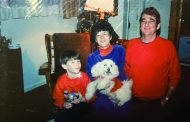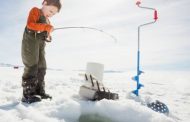
瑞荣绘画教室:613-796-0688
文章作者:荣宁
从加拿大回中国没几天便是中秋了,中秋是亲人团聚的日子,也是把酒赏月之时。记得美学上有一个流派叫美在主观说,比如,月亮还是那个月亮,但人在不同时期由于阅历和心境不同,所看到的月亮也不一样。小时候看月亮全是童话,年轻时看月亮全是爱情,现如今看月亮全是科学。月亮上有水吗?有空气吗?月亮适合人居住吗?其实我并非理工男,怎么会在年过半百时对科学产生了如此浓厚兴趣呢?这完全是受到了Jon的影响。Jon是一位加拿大小伙子,也是一位科学达人。多年前我第一次去加拿大接触的全是华人,唯一能和我深度交流的老外就是Jon,因为他可以说一口流利的汉语。Jon是一个活力四射的年轻人,他有一双智慧的眼睛,与他交流时,我发现他最感兴趣的话题就是科学。他曾当过高中的科学老师,专教物理和化学。但他并不满足已经掌握的知识,他对未知的世界充满了探索的期待,于是他在工作了几年后又回到课堂捧起了书本,对学习他就像海绵吸水一样孜孜以求,一天24小时,除了吃饭睡觉,他不是在学习,就是在去学习的路上。我从没有见过一个像他这样如此享受学习的人,仿佛越难越有快感。Jon说科学是我的翅膀,有了它我将飞得更高更远。如今Jon的知识面已经不局限于自然科学,他在人文科学方面,尤其是语言学和历史学方面也有很深的造诣。他不但懂英文、中文、法文和古希腊文,对古希腊历史也是如数家珍。上帝真是非常厚爱Jon,不但让他成为一个学霸,而且让他成为一个暖男。Jon能烧一手好菜,他是用科学的精神来烧菜,调料的种类、份量,火候的大小、温度,掌握得细致入微,一丝不苟。他不但会烧中国的麻婆豆腐、宫保鸡丁,还会烧古罗马的宫庭菜。吃他烧的菜不仅是食欲的满足,更是享受舌尖上的文化。特别可贵的是Jon还是一个大孝子,每当学校一放假,他就驾车八小时回到他的家乡陪伴父母。他能在冬季到来之前为老人准备好整个冬天烤火的木柴。为家里保养好来年要使用的车船。和Jon在一起我不但感受到的是满满的正能量,而且总是受他影响、被他打动。我非常羡慕Jon的父母有这么一个优秀的孩子,真是好福气。Jon曾经来中国工作过两年,他在教授英文的同时,学会了中文,而且对中国还有很深的感情,作为宇宙奥秘的探寻者,他看到这几年中国航天事业的发展,神州飞船、天宫空间站、常娥探月工程,每每说到这些,他都无比激动,他说未来探索宇宙奥秘的神器在中国。中秋之秋,皓月当空,我在扬子江畔仰望星空,就会想到常在渥太华河边快走的Jon,12小时以后,他也会看到这轮明月,月亮代表我的心,我要告诉Jon,迅猛发展的中国一定会助他实现科学梦。再过4天就是Jon的生日了,他写了一篇关于科学的文章为自己庆生,我也在遥远的中国祝他生日快乐!


On Cassini, Voyager and the Rest
为了纪念这个日子,渥太华青年航天科技爱好者Jon特别为本报写了这篇文章!写得非常好!
And so now the Cassini spacecraft has ended its mission and I have been very pleased over the years to see it succeeding so thoroughly. A follower and proponent of the exploration of space from birth, I feel that this year in particular is worth reflection.
Having been born in the same year as the launch of the Voyager 1 and 2 spacecraft 40 years ago, I grew up with their journey through the solar system in the 1980s. I recall anticipating Voyager 2’s arrivals at Uranus and Neptune in 1986 and 1989 and watching as new astronomy books thereafter included pictures of these planets and their moons where previous books could only rely on artists’ conceptions and poor telescopic images. Now these probes are far beyond Pluto and are setting out into interstellar space; though they are still functional it is likely that their radioisotope generators will wind down to inoperability before 2030. Then the spacecraft that truly opened up the outer solar system and gave us the perspective of our world as a pale blue dot in the Cosmos will be silent, though they each carry perhaps one of the most enlightened and hopeful artifacts we have ever produced – the golden records crammed with music, sounds, greetings and pictures from Earth. Their importance lies not as much in the slight possibility that they will be found by an alien intelligence, or even our own descendants in a distant future, but that we were hopeful enough about our future to do it and that something meaningful of Humanity has escaped not just the confines of Earth but the empire of the Sun. Billions of years from now when things here are utterly different than they are today, those two records will likely be much the same as they were when launched. In fact, not only are the two Voyager spacecraft headed beyond the solar system, but the earlier Pioneer 10 and 11 spacecraft (each with a modest plaque illustrating something of the creators of the probes and where they came from) and the New Horizons probe (which recently flew past Pluto) join them. But for myself, feeling a sort of kinship, I seem to accompany the Voyager probes in our mutual explorations of the Cosmos.
I recall reading about the Cassini spacecraft, then under construction, in the early 1990s and in 1994, at a chance meeting with a science journalist, asking if it was still in development, always afraid of a cancellation. When the spacecraft was launched in 1997 I was in my first year of university and I remember bringing it up at a birthday shindig to which I had been invited, as it coincided with the individual’s very birthday. Such news met with a lukewarm reception, but then at that early date the probe could just as easily have fallen into the ocean on launch or failed en route. When, after its long journey, Cassini arrived at Saturn in 2004 I was a high school teacher and I kept my students informed of the discoveries being made, especially when the Huygens lander which had hitched a ride to Saturn on Cassini’s underbelly parachuted to the surface of the moon Titan. Titan, a moon bigger than our own with an atmosphere thicker than Earth’s, a surface filled with primordial organic chemicals, covered in lakes of methane and dunes made up of grains of ice. A world where, were we to land there, our habitats would not need to pressurized, merely heated above the ambient temperature of -180 °C as we explored an environment perhaps similar in many ways to the early pre-biotic Earth. So now 20 years after its launch, after a successful survey of Saturn’s domain, running low on fuel, Cassini has been dispatched into the clouds of Saturn and incinerated as its cousin, the spacecraft Galileo, had been at Jupiter and for the same reason – to prevent the possible contamination of nearby moons with bacteria from Earth.
With the long term survival and prosperity of Humanity in continued and heightened peril, it is always tempting for some to suggest that such endeavors as the Voyager and Cassini missions are not worth the cost. Although these spacecraft have validated the techniques of interplanetary travel, returned a wealth of scientific information, captured the imaginations of millions, given us a new perspective on our place in the universe and quantitatively allowed us to compare these other worlds to our own, thus improving the understanding of our own home, let us put this aside for the moment. The cost of these missions is a pittance compared to our expenditures on military matters which directly threaten our survival and to the amount of money hoarded by the wealthiest members of our society. However, those who would write off space exploration as superfluous hardly then claim that nuclear warfare or extreme wealth inequality are necessary. Perhaps these are seen as the unfortunate features of a world order that cannot be imagined any other way, whereas not exploring space is as easy as not funding it. Nevertheless, I am ultimately optimistic about our future.
What also makes 2017 such an auspicious year in terms of space anniversaries is that come this October 4th it will have been 60 years since the first satellite (Sputnik I) was launched and one could say that the Space Age began. At that time my parents, who were then only married 2 years, went outside like many to see whether they could spot a glint of light off of what was our first toe into the waters beyond Earth as it went beeping overhead.










